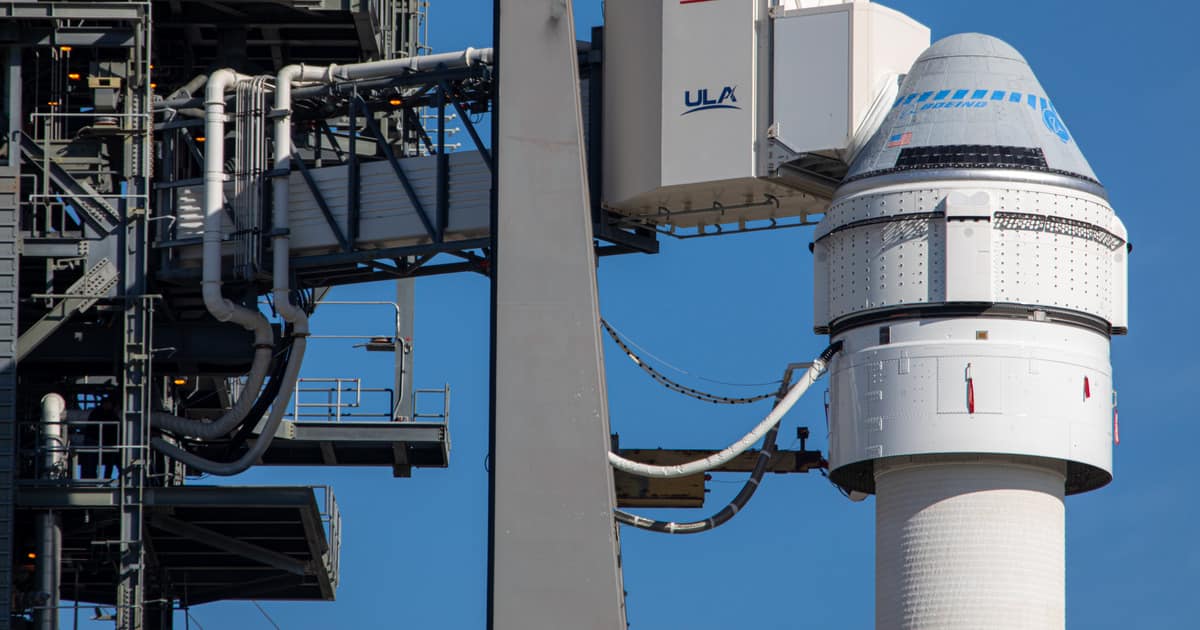Boeing’s Starliner passenger spacecraft launched smoothly on Friday. However, as The Verge reported, things went wrong after that. It is now unable to dock with the International Space Station.
NASA and Boeing are working together to figure out what to do next with the spacecraft. Since the Starliner cannot reach the ISS, Boeing is going to try to bring it safely home, demonstrating how it will land on future missions. It’s possible that Starliner will return to Earth and land at White Sands Missile Range in New Mexico in the next 48 hours. However, that’s not official yet, and Boeing says it will provide updates on what the team decides. Today’s botched launch is a big blow for both NASA and Boeing, which have been working for years to get to this flight. Boeing’s CST-100 Starliner is a critical part of NASA’s Commercial Crew program, an initiative to develop private US vehicles to transport astronauts to and from the International Space Station. During today’s test flight, Boeing planned to demonstrate Starliner’s ability to travel to space and dock with the station.
Check It Out: The Launch of Boeing’s Starliner Spacecraft Didn’t go to Plan

But let us not forget, despite Boeing and ULA clearly being NASA’s favourite, SpaceX did this about nine months ago and the Dragon Capsule had no problems. Boeing’s vehicle failed despite the extra $300 million paid to them under the table by NASA to help them catch up. https://spacenews.com/nasa-inspector-general-criticizes-additional-boeing-commercial-crew-payments/
Boeing and ULA are part of the good old boy network and can do no wrong in the eyes of NASA brass. So I’m glad their weren’t any people onboard this flight. NASA has Go Fever with the Starliner and When they get that accidents happen.
As I feared NASA is thinking of flying the nexr Starliner mission with a crew.
https://spaceflightnow.com/2019/12/20/boeing-crew-capsule-falters-after-launch-from-cape-canaveral/
To quote NASA administrator Bridenstine “ Bridenstine said Friday it was too early to know whether the Starliner malfunction — and its inability to reach the space station — will affect NASA’s plans to fly astronauts on the next Starliner mission.”
They had a major failure and are still looking at flying crewed. They were not able to dock with the station, or even test those systems, yet they are still looking at flying the next mission to the ISS as per the schedule.
NASA has Go Fever, and when they do, people die.
@geoduck
Your points are all well taken, and you’re correct about adverse outcomes following NASA Go Fever.
However, this is consistent with NASA’s current practices. The problem was not with an engine or an O ring, but a clock; and NASA argue that had the vehicle been crewed, the astronauts would have caught and manually fired the engines to achieve higher orbit. NASA also point out that, with this orbital trajectory, even if something goes amiss, a crew could safely land the craft.
A major assumption with all of the above is that all of the monitoring is consistent with an otherwise nominal flight, faulty timer notwithstanding, once the vehicle is recovered.
Part of one’s view depends on whether you trust their post-launch commentary. Their claim is that the life support and navigation systems worked perfectly — what failed were the automation systems. If a (trained) crew had been aboard, they could have taken manual control and corrected all of the problems in real time.
… and never forget that ALL manned spaceflight work is still considered “experimental”. Failures are a normal part of that.
Charlotte:
This is clearly a blow to both NASA and Boeing, a truly besieged outfit courtesy of its 737 MAX, and for the latter the timing could not have been worse. Nonetheless, this failure only underscores that space flight is hard, and harder still is rendezvousing with another body in motion and safely docking with it or landing on it.
The nature of the problem appears readily fixable, however. The Saturn V, which eventually successfully took man safely to the moon had its issues during unmanned test flights.